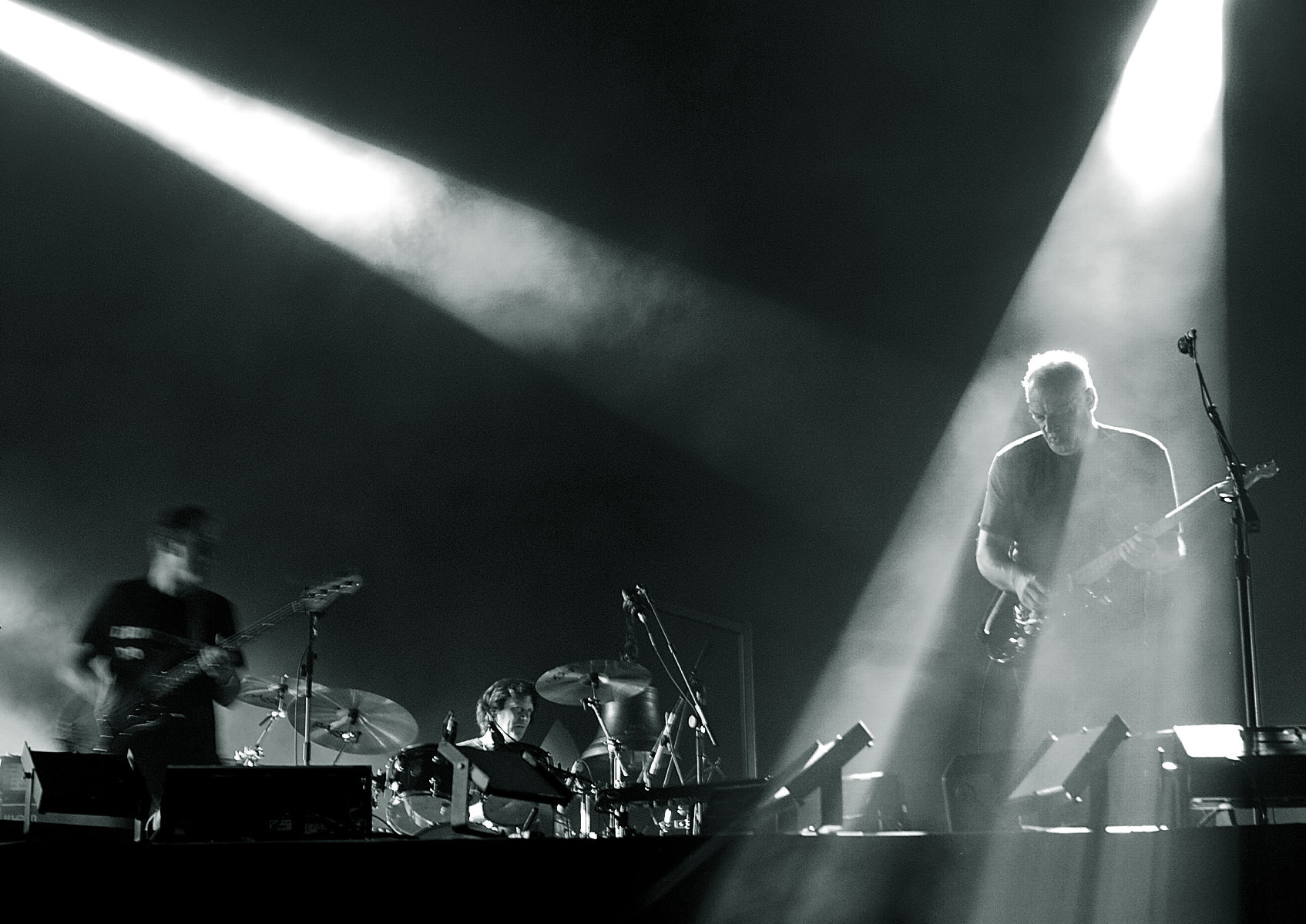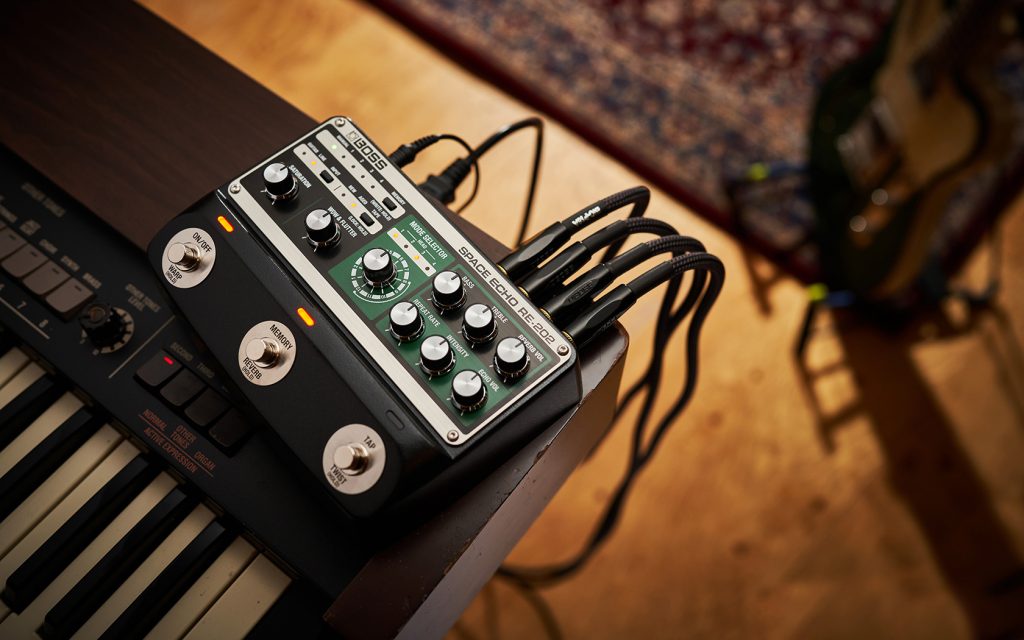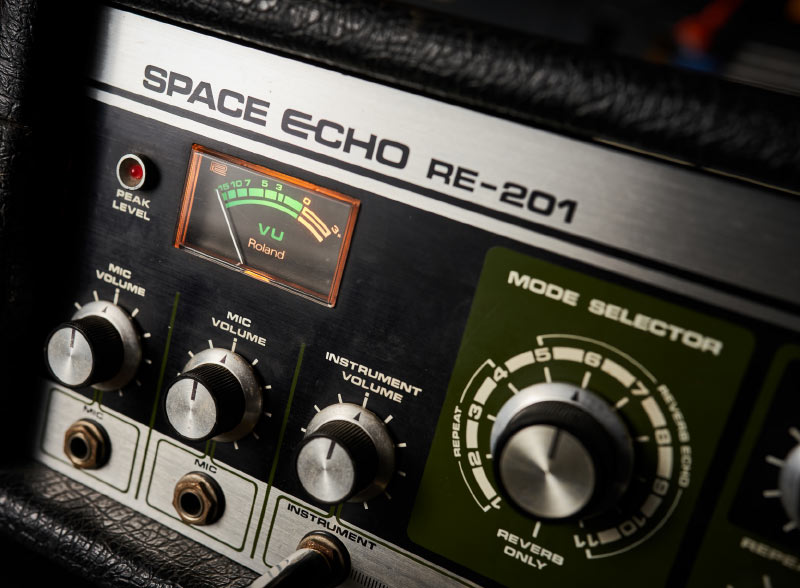Echo units and reverb chambers date back to the 1950s and are vital elements in rock and pop history. Music recorded in a dead-sounding studio room needs some added ambience to make it sound alive. This is why engineers developed ingenious devices such as spring and plate reverbs and tape echo machines. Soon after, diverse artists found new ways to exploit these effects to create distinctive sounds. In doing so, the characteristics of these effects became inextricably linked with the sound of modern music.
The Space Echo Family
It’s fair to say that of the Space Echo family, the RE-201 Space Echo, released in 1974, is the model that attracted the most interest. Indeed, it’s what we think of today when somebody mentions the Space Echo. The unit’s combination of multi-head delay and spring reverb can cover any musical genre. These sounds range from the short, slapback delays used in rockabilly to the repeating delays used by Pink Floyd’s David Gilmour or The Shadows’ Hank Marvin. Delay is also key to the sound of U2’s The Edge.
"The combination of multi-head delay and spring reverb can cover any genre—from the slapback of rockabilly to the repeating delays used by Pink Floyd's David Gilmour."

Dub Style
Of course, it also plays a pivotal role in dub where manual operation of the controls allows users to play the delay almost like an instrument. Look anywhere in the history of pop and rock music, and you’ll find echo is an essential ingredient.
There are many reasons that the Space Echo is still revered today. Foremost is its wonderfully musical sound; the switchable head system makes the RE-201 very versatile. It also responds well to dub-style hands-on control. In that genre, adjusting delay time and feedback during a performance are essential ingredients.

A Versatile Sound Palette
The RE-201’s sonic flexibility is due, in part, to its three separate replay heads. These work in different combinations to create various delay patterns. It also has a wide motor speed control range and adjustable EQ. Importantly, the RE-201 uses a very long tape loop that snakes into a special enclosure, which reduces tape wear. This also means the tape is not constantly under tension.
Many studio producers routinely treat vocals and instruments with a mix of delay and reverb. As a result, the RE-201’s integral spring reverb provides the necessary reverb/delay effect combination in one unit. Equally essential is that Roland created the RE-201 with the durability to withstand the rigors of life on the road. Other than the occasional new tape and head clean, it requires little in the way of upkeep.
"Dub music producers such as King Tubby and Lee Perry manipulated the front panel controls in real-time. This created distinctive runaway feedback and other effects."
High-Profile Users
Artists from Bob Marley to Radiohead to Portishead utilized the RE-201 to help forge signature sounds. Dub music producers such as King Tubby and Lee Perry manipulated the front panel controls in real-time. This created distinctive runaway feedback and other effects. Other high-profile users include Jean Michel-Jarre, Vangelis, Future Sound of London, The Orb, Fatboy Slim, and Tomita. Ultimately, the RE-201 has the capacity to slot into any genre.

BOSS Captures the Echo
Today, a used RE-201 commands a high price and may require servicing, which will add to its cost. That’s why BOSS, the guitar product division of Roland, turned its attention to developing emulations. First came the RE-3 and RE-5, followed by the RE-20, which dates back to 2007. At the time, the latter was revolutionary. Later, with more processing power and improved modeling algorithms, BOSS introduced the stereo RE-2 and RE-202.
"The RE-202 features all the essential controls of the legendary unit. Plus, it features an extra playback head, longer maximum delay time, programmability, and choice of reverb types."
Sounds From Beyond
A key point to keep in mind is that these new units provide the same, or more, control as the originals. In addition, they also model the subtle characteristics of the RE-201 in deep detail. The RE-202 features all the essential controls of the legendary unit on a very familiar-looking front panel. Plus, it features an extra playback head, longer maximum delay time, programmability, and choice of reverb types.
The RE-202 also has the ability to select the age of the machine/tape, degree of saturation, and amount of wow and flutter. Users get their choice of instrument or line level for a studio or live sound mixing console use. There are also connections for extra footswitch or expression control capability.
Dub performers who need to play the controls in real-time will find that the RE-202 behaves and sounds exactly like the original RE-201. Yet it offers added functionality such as the footswitch-operated Twist and Warp effects.

"The RE-202 also has the ability to select the age of the machine/tape, degree of saturation, and amount of wow and flutter."
A Compact Solution
Perhaps you don’t need hands-on control during a performance but still want to nail the sound of the real thing. The RE-2 delivers the essential RE-201 features, including a spring reverb emulation, in a stereo BOSS compact pedal. In addition to the main controls (on dual concentric pots to conserve space), the RE-2 has variable wow and flutter. Again, users can expand the functions with optional switches or an expression pedal.
The uniquely musical sound of the RE-201 is as relevant today as when it appeared almost 50 years ago. Plus, thanks to the RE-202 and RE-2 pedals, it’s now available to every musician.







